Are you new to the world of smoking with an offset smoker? This article walks you through how to use an offset smoker, from ignition to smoke control and maintenance. Step by step, you’ll gather practical tips for expertly smoked delights, with clear instructions aimed at beginners and those looking to refine their technique.
Key Takeaways
-
An offset smoker’s design, with the fire box separate from the cooking chamber, is optimized for indirect heat cooking, requiring proper temperature management and fire-building techniques for optimal results.
-
Safety and maintenance are crucial with offset smokers, which includes cleaning residue, positioning the smoker safely, using heat-resistant gloves, and keeping fire extinguishers or water on hand during use.
-
Expertise in managing fire and smoke—including choosing the right fuel, identifying the ideal smoke quality (‘thin blue smoke’), and keeping consistent temperatures—is essential for achieving the desired smoky flavor and tenderness in the food.
The Anatomy of an Offset Smoker
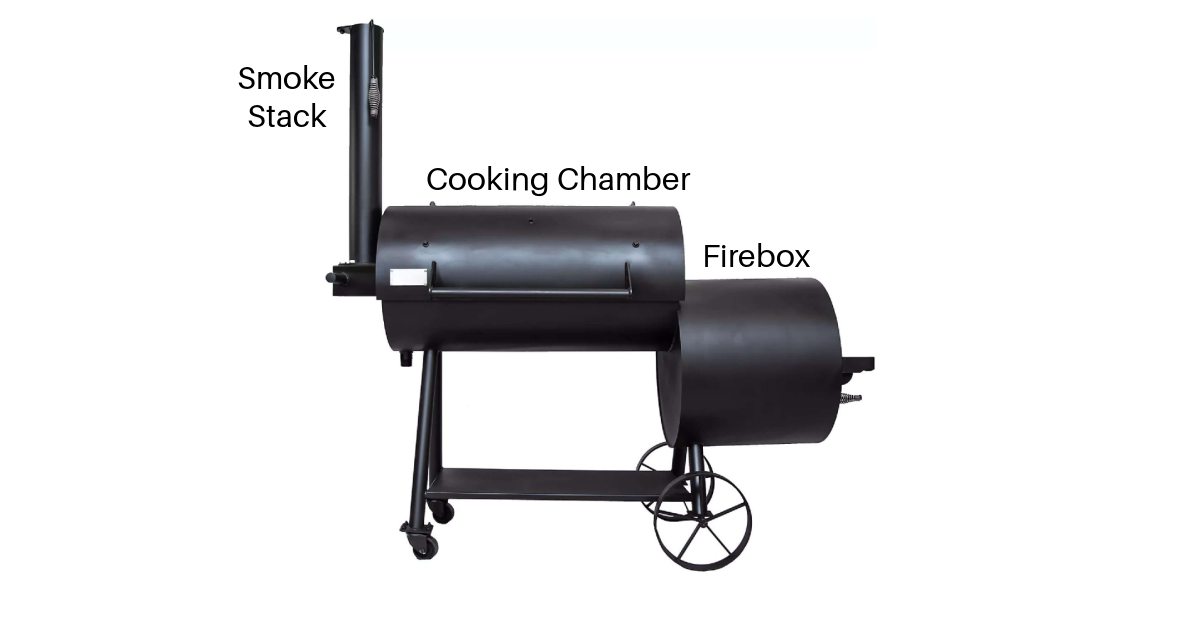
The offset smoker, a classic apparatus in the world of barbecuing, stands out due to its unique design. The fire box, constructed from thick steel for temperature stability, is positioned to the side of the cooking chamber. This strategic placement ensures the meat is not exposed to direct heat, a key feature in achieving that tender, smoky-flavored meat we all love.
Inside the cooking chamber, resides a steel baffle plate, redirecting heat and smoke for indirect cooking, and the cooking grates offering the perfect surface for smoking food. In essence, the design of an offset smoker is optimized for indirect heat cooking.
Understanding Your Offset Smoker
The offset smoker is made up of two main chambers – the larger cooking chamber for the meat, also known as the smoking chamber, and a smaller fire box chamber for maintaining the fire.
There are different zones in the cook chamber
What that means is that in a smoker, the fire box side tends to be hotter than the exhaust side. For instance, if the temperature reads 280 degrees Fahrenheit near the fire box, it might drop to around 250 degrees Fahrenheit near the exhaust. These numbers serve as a general indication of the temperature range rather than exact measurements.
Preparing Your Offset Smoker for Use
Before igniting your offset smoker, you should verify that it’s clean and prepped for use. Begin by washing the inside and outside of the smoker to remove any residue from the manufacturing process. Brush the grates with a nylon bristle brush to remove any leftover residue.
After each use, thoroughly clean the smoker by removing ashes to avoid rusting and scrape out any grease or bits of food from the cooking chamber with a putty knife.
Safety First: Positioning and Precautions
Prioritizing safety is paramount when operating an offset smoker. Start by ensuring the smoker is placed on a stable, level surface to reduce the risk of tipping over, which could cause potential fires. Maintain a safe distance between the smoker and any flammable materials as well as structures to prevent accidental fires.
Use heat-resistant gloves to protect against burns when managing the fire box or handling food within the smoker. Also, it’s always a good idea to keep a fire extinguisher or an accessible water source nearby as a safety measure for unexpected flare-ups or fires.
Igniting Your Passion (and Your Fire)
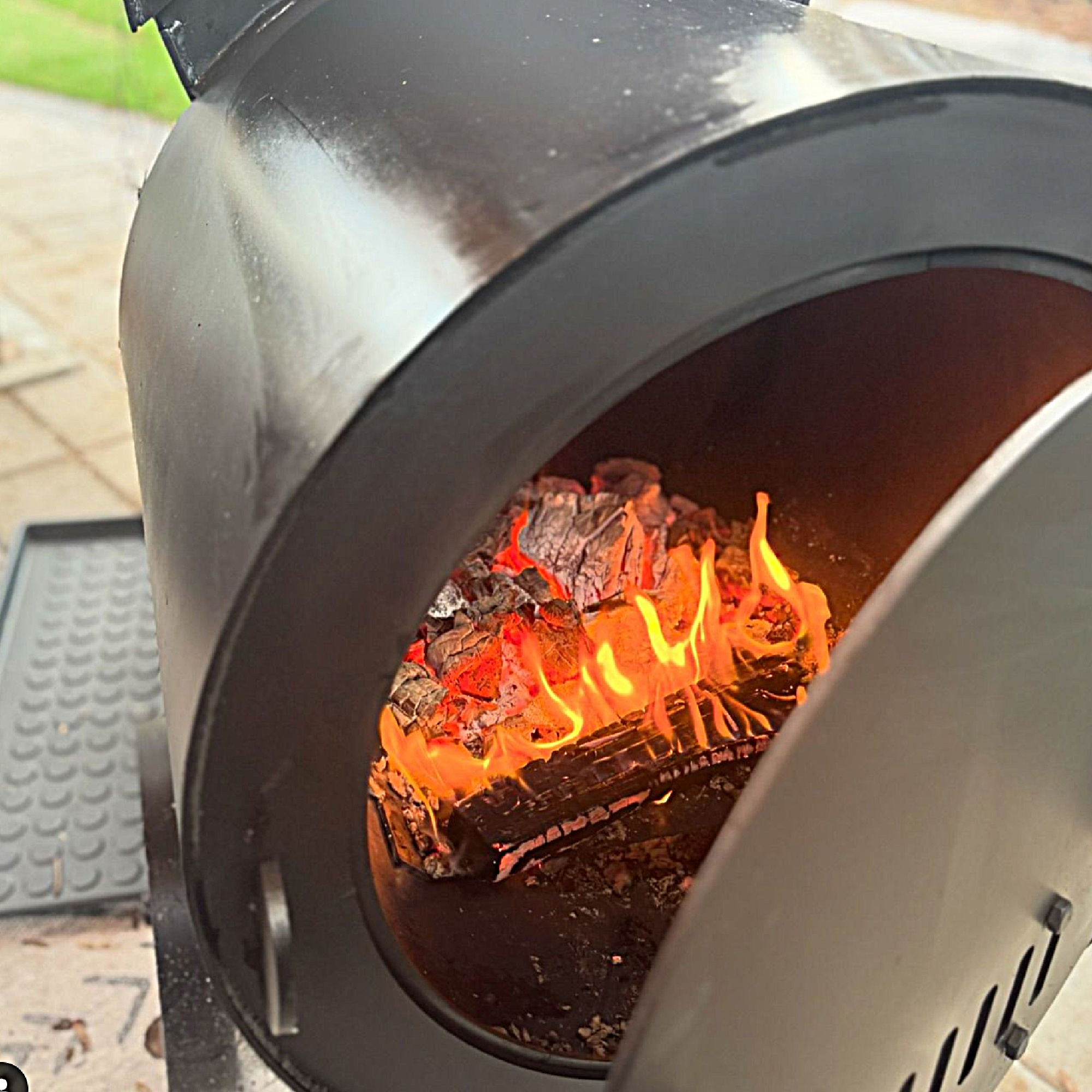
Igniting the fire in your offset smoker, also known as a stick burner, although seemingly simple, is actually a skill that demands some expertise. A successful barbecue begins with a well-lit fire, and the tool of choice for this is a charcoal chimney or chimney starter. This tool allows you to ignite charcoal for grilling or smoking by placing crumpled newspaper or lighter cubes under the chimney filled with charcoal and lighting it. Charcoal grills, in particular, benefit from this method of ignition.
The charcoal within the chimney, which is used when wood burns, is ready for cooking once it has a light layer of ash on it, signifying it is hot enough for a clean burn.
Building the Perfect Fire
The crux of constructing the ideal fire in your offset smoker lies in effective fuel use. Start by loading about 200 briquettes of charcoal into the fire box basket halfway, leaving room to add more as necessary for heat management. If you’re using fire starters, place them just under the top layer of charcoal to ignite the charcoal from the top down.
For a consistent and flavorful smoke, strategically place wood chunks on top of the charcoal or arrange them in layers between the charcoal to ensure each layer ignites sequentially. Using wood chips alongside wood chunks can also enhance the smoking process. Remember, the wood used should have a low moisture content to prevent steam and undesirable flavors during combustion.
Managing the Flames
In order to cook safely and efficiently, flame management in your offset smoker is vital. Continuous monitoring of the smoker is essential to prevent fire hazards and maintain steady management of the flames. Large, billowing white smoke is a sign that the fire is undergoing dehydration and gasification; responding to this by providing more oxygen can help in managing the fire properly.
Placing a water pan beneath the meat in the cooking chamber can reduce flare-ups and result in cleaner smoke, enhancing the meat’s flavor and helping to manage flames.
Mastering Temperature Control
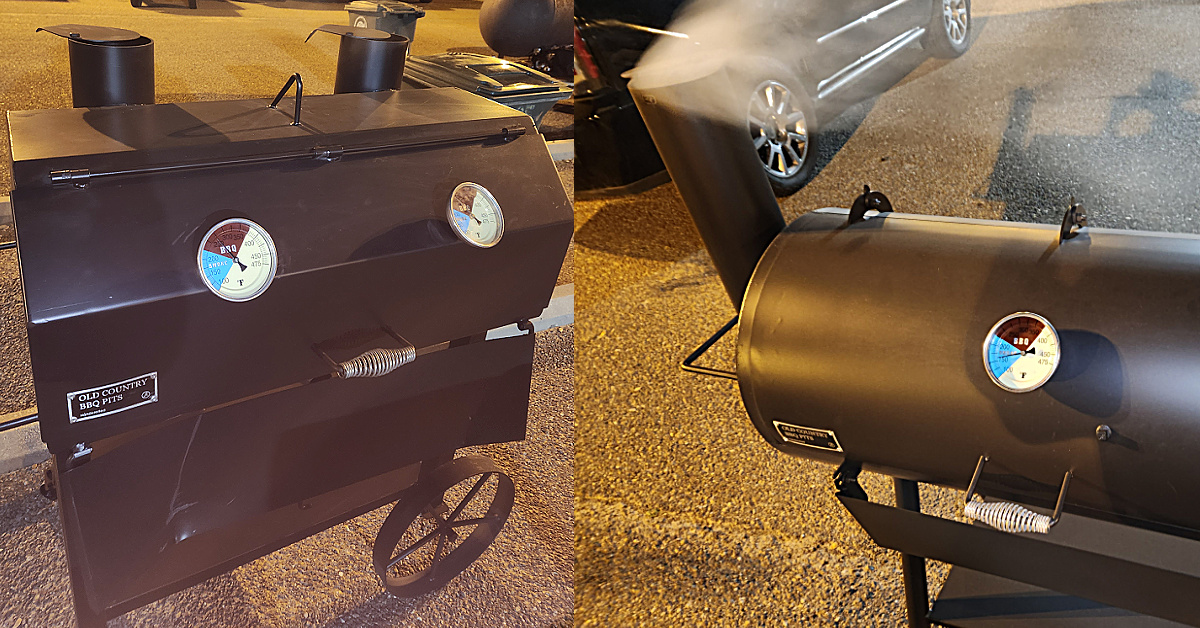
Achieving flawless results with your offset smoker hinges on proficient temperature control. Using an installed thermometer, you can get a real-time read on the cooking temperature. Additionally, employing a wireless remote thermometer allows you to conveniently monitor the cooking chamber temperatures without needing to stay close to the smoker.
Regulating airflow through the vents and flue damper is fundamental for managing the smoker’s internal temperature and should be adjusted to fit the desired cooking conditions. After making any adjustments to the vents or damper, allow around 15 minutes for the changes to affect the smoker’s temperature, highlighting the need for patience in temperature control.
The Art of Temp Control
Regulating temperature in an offset smoker primarily involves managing air intake via the intake vents, rather than controlling the output through the chimney. To maintain a steady temperature, follow these steps:
-
Start with the intake damper fully open to establish the fire.
-
Close the intake damper in increments to reduce the airflow and lower the temperature.
-
The chimney should be mostly open with only minor adjustments to refine the temperature.
-
Remember, temperature adjustments should be gradual.
-
Give changes around 10-15 minutes to take effect before making subsequent adjustments.
Using a digital remote thermometer to monitor the desired temperature at grate level allows for accurate adjustments to be made without the need to frequently open the smoker lid, which can cause temperature fluctuations and prevent steady temperatures.
Keeping It Steady
Keeping a consistent temperature during the entire cooking process is key to attaining optimal results. Here are some tips to help you maintain a steady temperature and retain heat:
-
Create and maintain a bed of coals before adding the meat
-
Keep the bed of coals consistent throughout the cooking process to diminish the need for frequent fuel additions
-
Use a baffle plate to act as a shield against direct heat and as a heat sink, providing consistent radiant heat that is essential for even cooking.
By following these tips, you can ensure that your food is cooked evenly and to perfection.
Effective ash management through shaking the fire box basket and banking fuel to one side supports consistent airflow and room for fresh charcoal. Additionally, moderating the temperature inside the smoker can be achieved by opening the fire box door to expel unwanted excess heat.
Smoke Signals: Understanding Smoke Quality
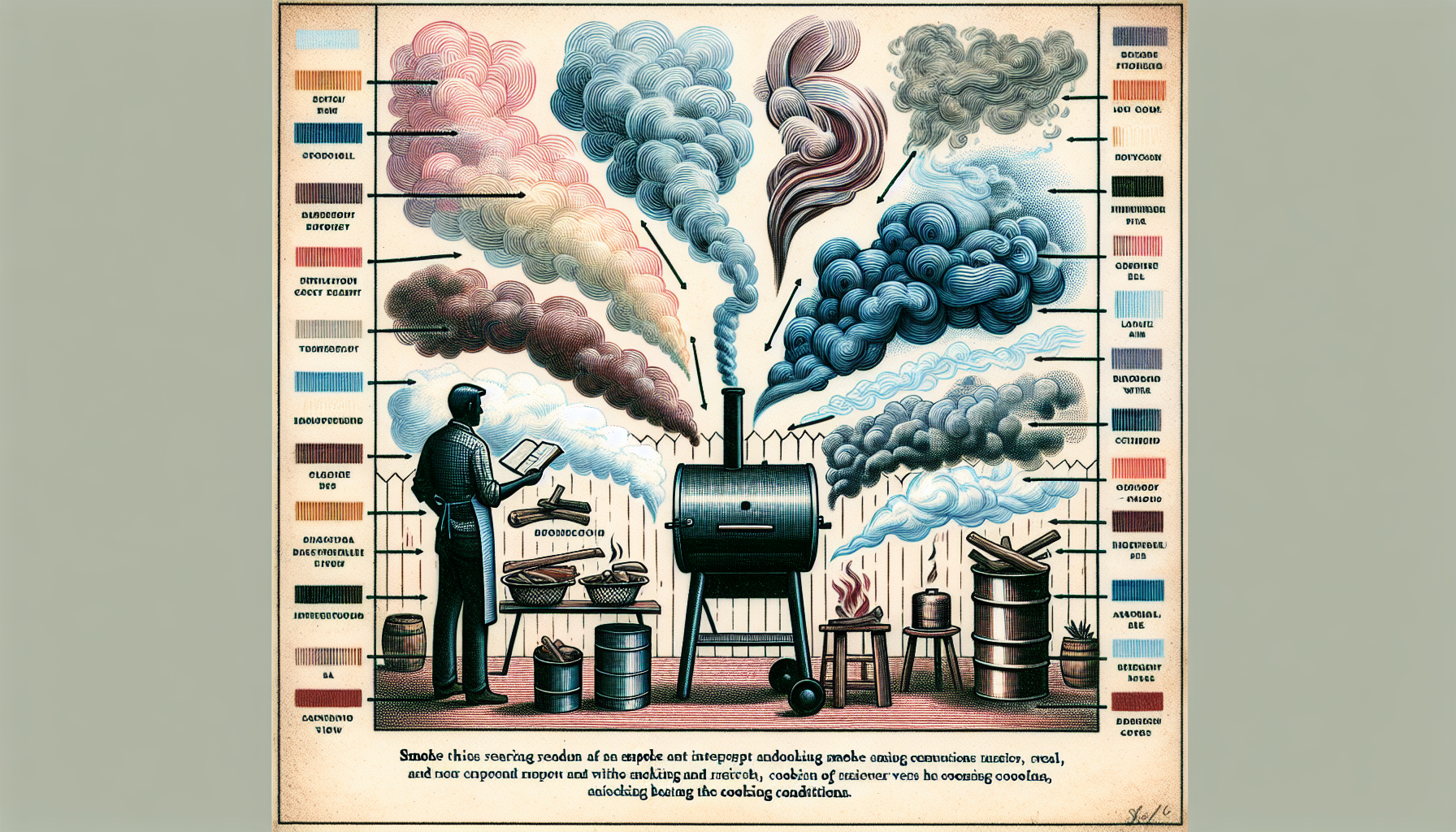
In offset smoking, smoke significantly impacts not just the flavor, but also the quality of your food. The color and thickness of smoke are affected by various factors, including:
-
The combustion temperature
-
The type of wood used
-
The moisture content of the wood
-
The amount of oxygen available
Black smoke indicates an unhealthy burn, depositing creosote on food which can give it a bad smell and taste. Gray smoke can signal the burning of unintended materials, possibly introducing unwanted flavors into the smoked meat.
Thick white smoke is appropriate for short-term smoking but should be used sparingly to prevent overpowering the flavor of the food. The presence of blue smoke, which is nearly transparent, denotes the clean combustion of the fire, providing a subtle smoke flavor that is ideal for barbecuing. Therefore, aim for ‘thin blue smoke’ rather than ‘thick white smoke’ to ensure a clean burning fire and the most favorable smoking conditions.
Reading the Smoke
Reading and interpreting the color and thickness of smoke is a key skill for anyone operating an offset smoker. Blue smoke indicates that the fire is burning cleanly and efficiently, with smoke particles at their smallest. This is optimal for smoking meat as it provides a subtle flavor that doesn’t overpower the taste of the meat.
On the other hand, thick white smoke can be acrid and undesirable, while black and gray smoke suggests a lack of oxygen, resulting in a bitter taste in the food.
Fuel Choices for Flavor
Fuel choice can have a substantial impact on the flavor of your smoked food. Different types of wood impart distinct flavors to the meat. Here are some examples:
-
Oak wood gives a medium earthy smoke profile
-
Hickory provides a strong, smoky flavor
-
Mesquite contributes an intensely earthy smoke
-
Alder, Maple, and Pecan offer milder sweet or nutty notes.
The smoke flavor can also be influenced by the climate and soil where the wood is grown, and the best aromatic compounds are released at temperatures around 650 to 750°F. However, it’s important to avoid over-smoking as it can lead to a bitter-tasting end product rather than enhancing the flavor.
Cooking Techniques & Strategies
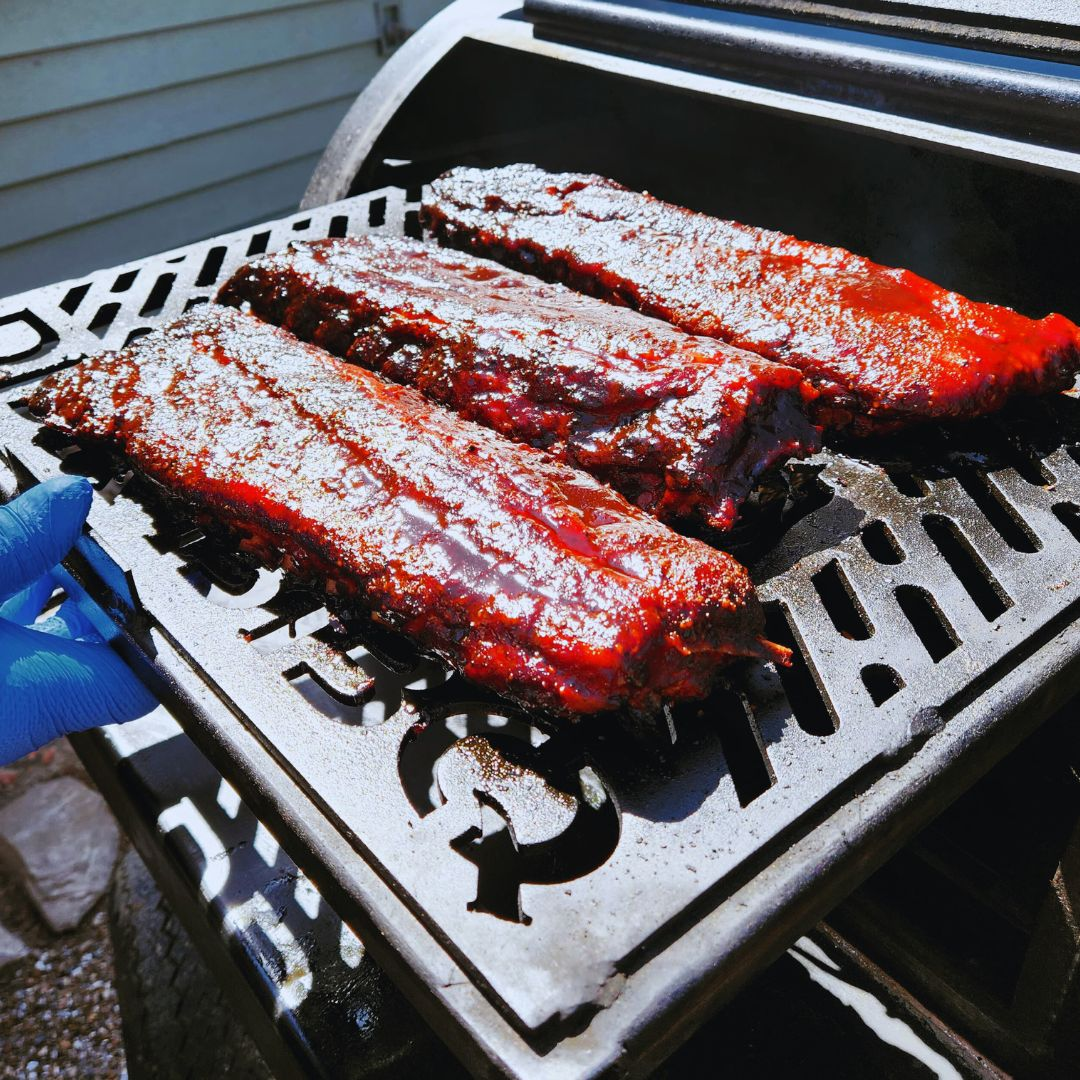
The essence of offset smoking lies in achieving authentic smoky flavor and tender meat. For even smoking, large cuts of smoked meat should be placed in the center of the cooking grate, with smaller pieces arranged around them, ensuring space between each piece for proper smoke circulation.
Low and Slow: The Secret to Tender Meat
The secret to tender and juicy smoked meats lies in low and slow cooking. Offset smoking is a technique that features cooking at low temperatures over extended periods. Cooking meats at low temperatures is crucial for achieving tender and moist results, improving both taste and texture.
The slow-cooking aspect of this process allows for slow rendering of fat and connective tissues, enhancing juiciness and tenderness. Therefore, the secret to tender meat in offset smoking relies on the ‘low and slow’ cooking principle, which is essential for superior flavor and texture.
Adding Moisture and Flavor
Maintaining the moisture of the meat during smoking is critical for obtaining optimal results. The evaporating water from the pan increases the humidity inside the smoker, which helps keep the meat moist and prevents it from drying out. Placing a water pan near the heat source is effective for stabilizing temperature and adding moisture to the cooking environment.
To enhance the flavor of smoked meats, aromatic ingredients such as herbs, spices, or beer can be added to the water in the pan, which imparts additional flavor nuances to the smoke.
Advanced Offset Smoker Tips
Becoming a master of the offset smoker is not overly complicated. With patience, understanding of the smoker’s behavior under different conditions, and the tips shared in this blog post, you’ll be well on your way to achieving barbecue perfection.
Fine-Tuning Fire Management
Honing fire management skills is key to maintaining consistent temperatures in your offset smoker. Here are some tips to help you achieve this:
-
The heavy construction of the fire box helps maintain a consistent temperature within the smoker.
-
Mindful addition of wood to the fire box is crucial for consistent temperature control during smoking.
-
Using an automatic smoker temperature control unit can automate this task by controlling the air intake.
Additionally, during longer smokes, it is necessary to remove excess ash to prevent it from impeding the fire and complicating temperature control. Lastly, keeping a smoking log – recording details like wood type, vent settings, and outside temperature – can help in replicating successful smokes and making improvements.
When to Reload: Timing Your Fuel Additions
Adding fuel at the right time is crucial for sustaining a consistent temperature and ideal cooking conditions in your offset smoker. Here are some tips for adding fuel to your offset smoker:
-
The optimal moment to add new logs or splits is when the previous logs have burnt down to coals but are still hot, ensuring a smooth transition and steady temperature.
-
Using larger splits or wood chunks ranging from golf ball to baseball size can result in longer burn times and hence, less frequent need for fuel additions.
-
Generally, fuel needs to be reloaded every 30 to 45 minutes, with the specific frequency depending on the smoker’s characteristics and the cooking conditions.
Additionally, the wood used for smoking should not be excessively dry as it may combust too rapidly, necessitating more frequent fuel additions to maintain the desired smoke and temperature.
Delicious Recipes to Try with Your Offset Smoker
Now that you’ve got the know-how, it’s time to fire up your offset smoker and create some mouthwatering dishes. Whether you’re a meat-lover or a vegetarian, there are a plethora of recipes at your disposal. There’s a recipe to suit every palate.
Here are some options to consider:
-
Brisket
-
Prime rib roast
-
Smoked meatloaf
-
Smoked mac and cheese
Summary
Mastering the art of offset smoking doesn’t have to be complicated. With the right knowledge of the anatomy of the smoker, understanding how to build and manage the fire, mastering temperature control, reading smoke signals, and applying the right cooking techniques, you’ll be on your way to achieving tender, smoky-flavored meats that are sure to impress. Whether you’re a beginner or a seasoned griller, these tips and strategies will take your barbecuing skills to a whole new level. So, fire up your offset smoker, follow these guidelines, and let the aroma of perfectly smoked meats fill your backyard.
Frequently Asked Questions
How do you cook in an offset smoker?
To cook in an offset smoker, start the fire in the side fire box and let it establish before adding meat. Adjust the dampers and smokestack to regulate airflow and control temperature for a low and steady cooking temperature. Place soaked wood chunks on the hot coals to generate smoke.
Can you just grill on an offset smoker?
Yes, you can grill on an offset smoker by building a charcoal fire directly below the cooking grates and grilling over the coals.
Should the smoke stack be open or closed on an offset smoker?
You should have the dampers and flue on the smoke stack/chimney open to ensure enough airflow and oxygen for the fire in your offset smoker to light properly. Make sure to add more charcoal if needed.
How do you keep a 225 degree temperature on an offset smoker?
To keep 225 degrees on an offset smoker, adjust the airflow using the flu damper during the cook, closing it to reduce heat and opening it to increase heat. Adding more wood to the fire box can also help maintain the temperature.
What is the primary purpose of the firebox in an offset smoker?
The primary purpose of the fire box in an offset smoker is to maintain the fire and provide indirect heat for cooking, positioned to the side of the cooking chamber to avoid exposing the meat to direct heat.

